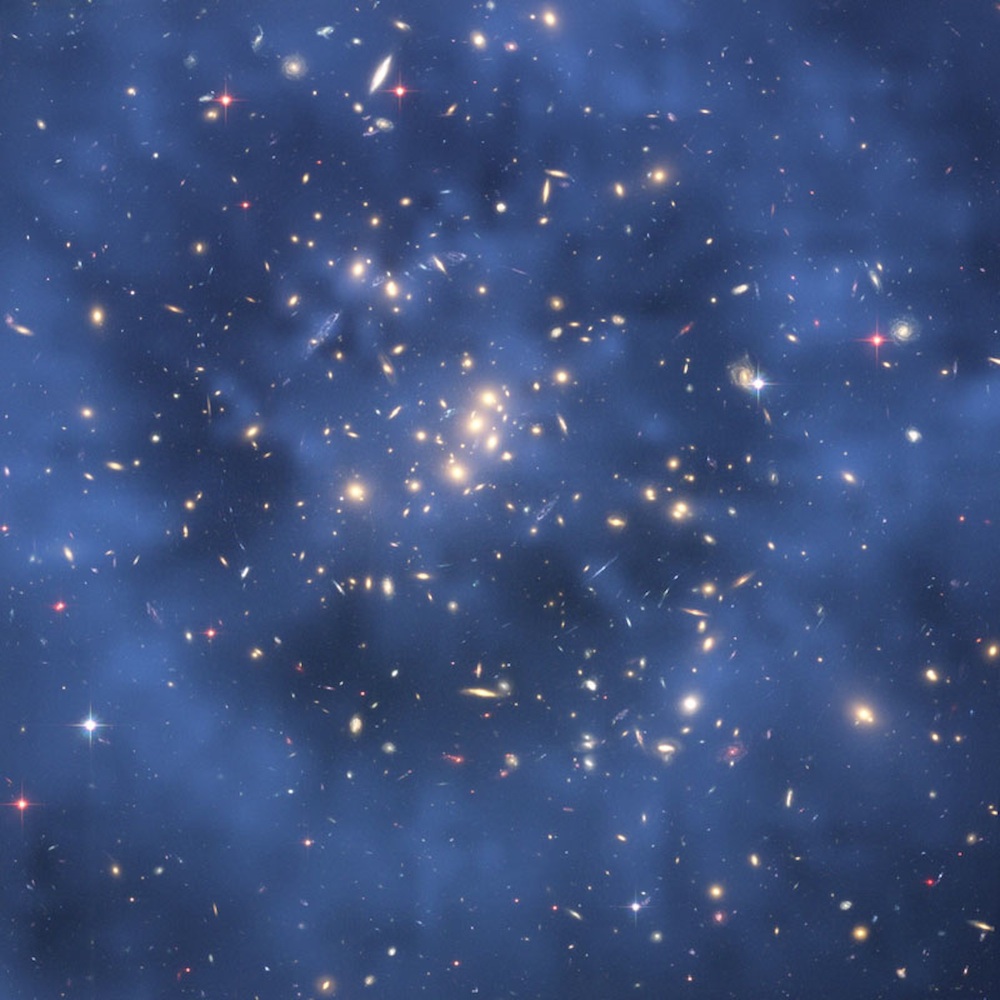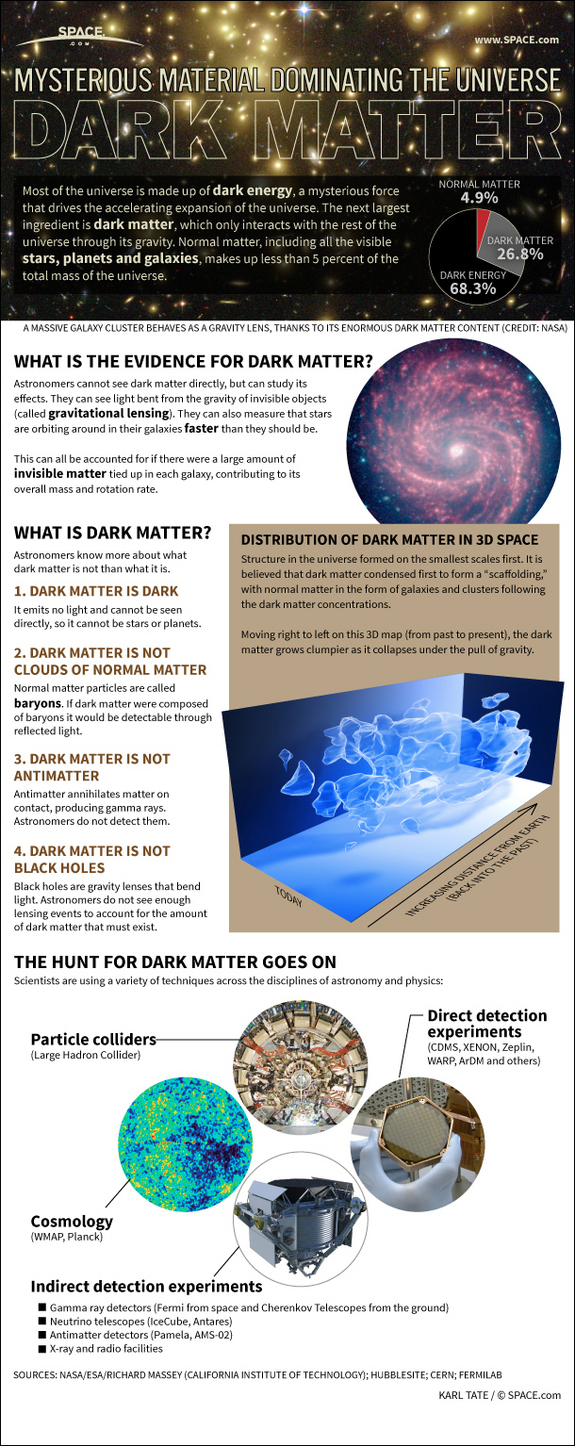Elusive Dark Matter May Have Already Been Found

The mysterious dark matter that makes up most of the matter in the universe may already have been detected with superconducting circuits, researchers say.
Dark matter is currently one of the greatest mysteries in the cosmos — an invisible substance thought to make up five-sixths of all matter in the universe. The scientific consensus right now is that dark matter is composed of a new type of particle, one that interacts very weakly at best with all the known forces of the universe, except gravity. As such, dark matter is invisible and nearly completely intangible, mostly only detectable via the gravitational pull it exerts.

A number of ongoing experiments based on massive sensor arrays buried underground are attempting to identify the weak signals dark matter is expected to give off when it experiences a rare collision with other particles. So far, none of these studies have detected any dark matter fingerprints. [The Hunt for Dark Matter: Images and Photos]
Now, theoretical physicist Christian Beck at Queen Mary University of London suggests much smaller benchtop detectors might be capable of detecting axions, which are leading theoretical candidates for dark matter particles.
Recent theoretical research suggests axions may condense together, essentially forming super-particles that physicists call Bose-Einstein condensates. "I started thinking not about the behavior of single axions, but [about] the collective behavior of many axions coupled together," Beck said.
Beck noted the equations describing the motion of these axions were very similar to those governing a special kind of circuit known as an S/N/S Josephson junction, a device made of two superconductors separated by a thin layer of metal. (Superconductors are materials in which electricity can flow without any resistance.)
Beck calculated that axions could leave behind a detectable electrical signal when they pass through these devices. "This opens up a new way of searching for axions that people haven't thought about before," he said.
Sign up for the Live Science daily newsletter now
Get the world’s most fascinating discoveries delivered straight to your inbox.
If this notion is true, Beck said that the evidence may already have appeared — in a 2004 experiment exploring noise levels in S/N/S Josephson junctions that revealed a signal of unknown origin. If that signal came from an axion, Beck calculated, it would mean these particles have masses less than four-billionths those of electrons.
To confirm or refute the idea that axions generated the 2004 signal, further experiments are needed, ones paying special focus to shielding from any external radiation, since axions cannot be shielded against.
In addition, the Earth is expected to move faster through the galaxy's halo of dark matter in June and slower in December, so if the signals come from axions, the number of such signals these devices detect should rise and fall over the year.
"I want to now collaborate with my experimental colleagues to do the tests I suggested," Beck said.
Beck is scheduled to detail his findings online Dec. 2 in the journal Physical Review Letters.
Follow us @Spacedotcom, Facebook and Google+. Original article on SPACE.com.











